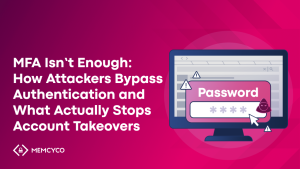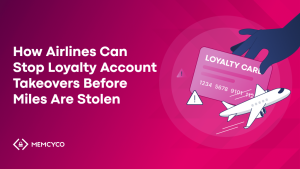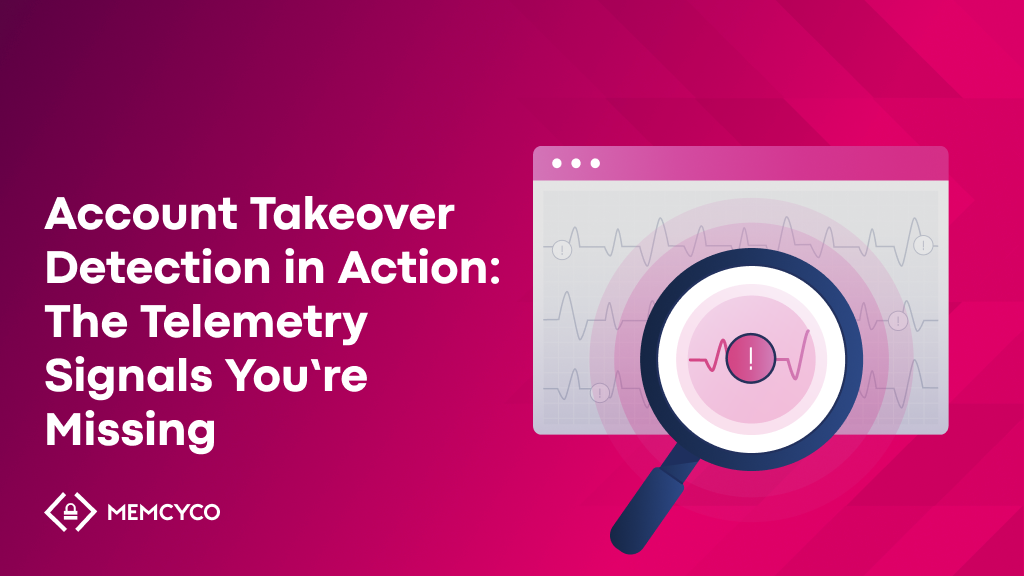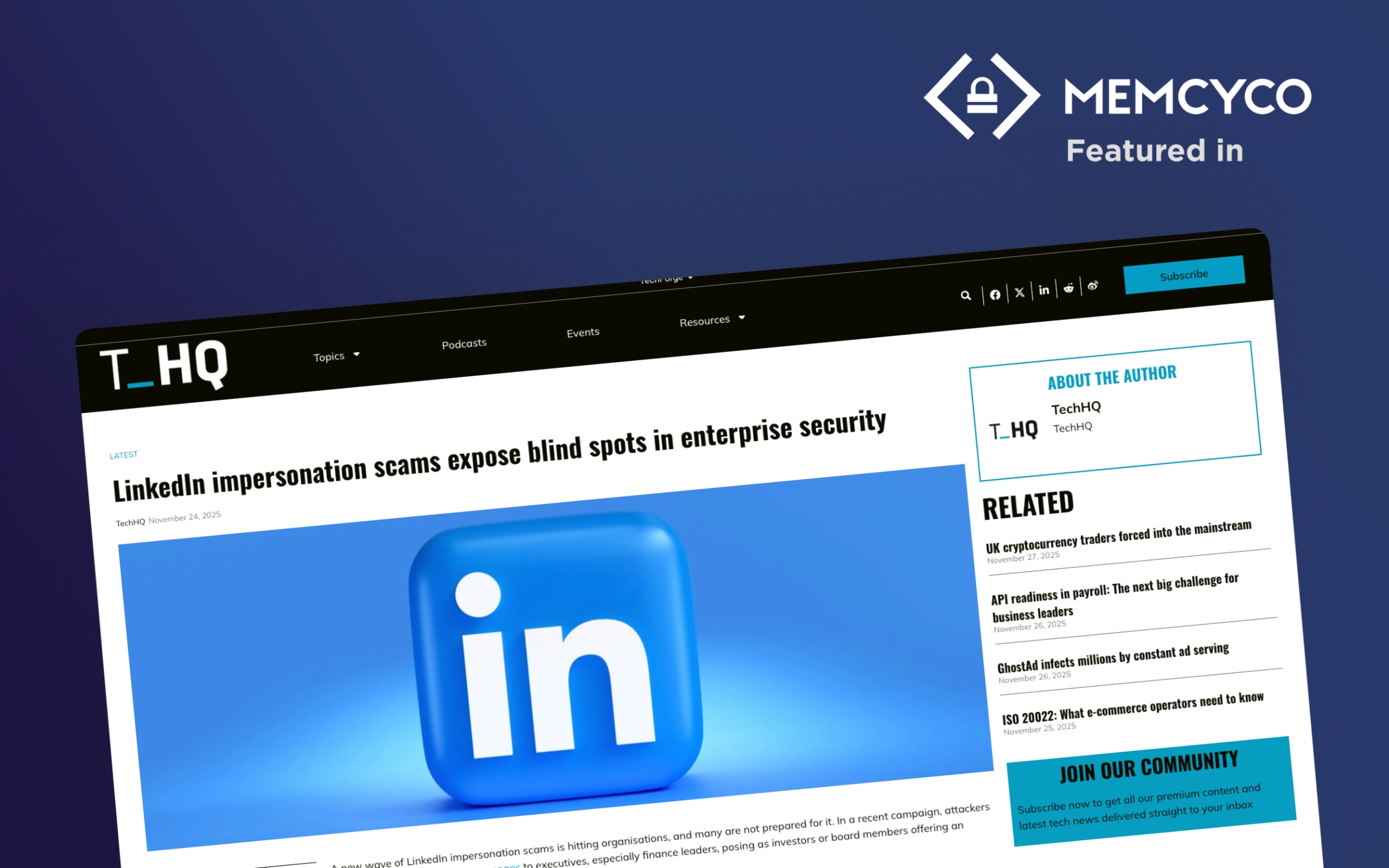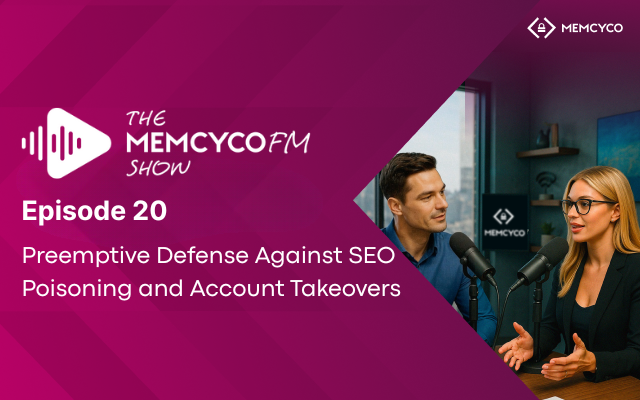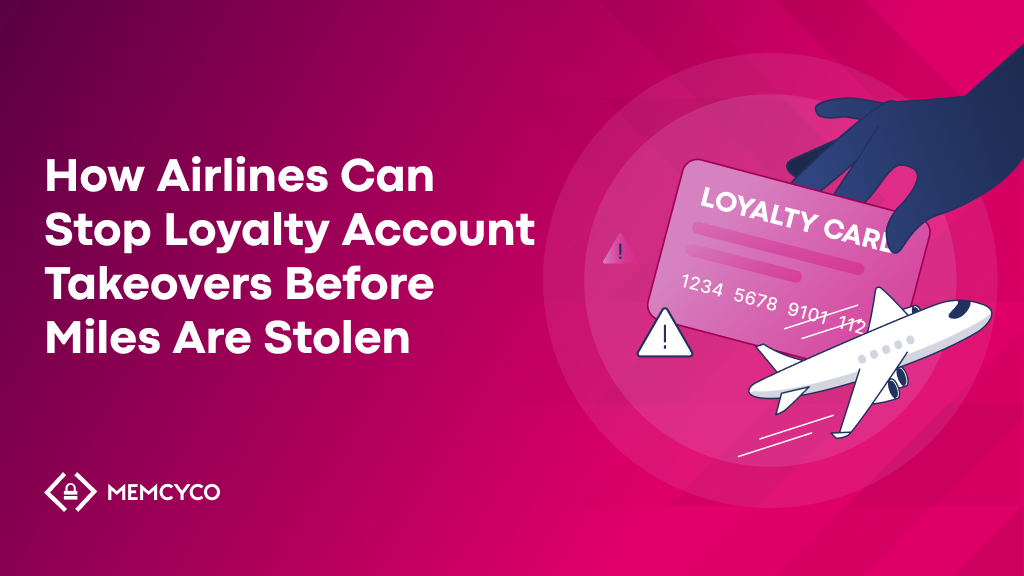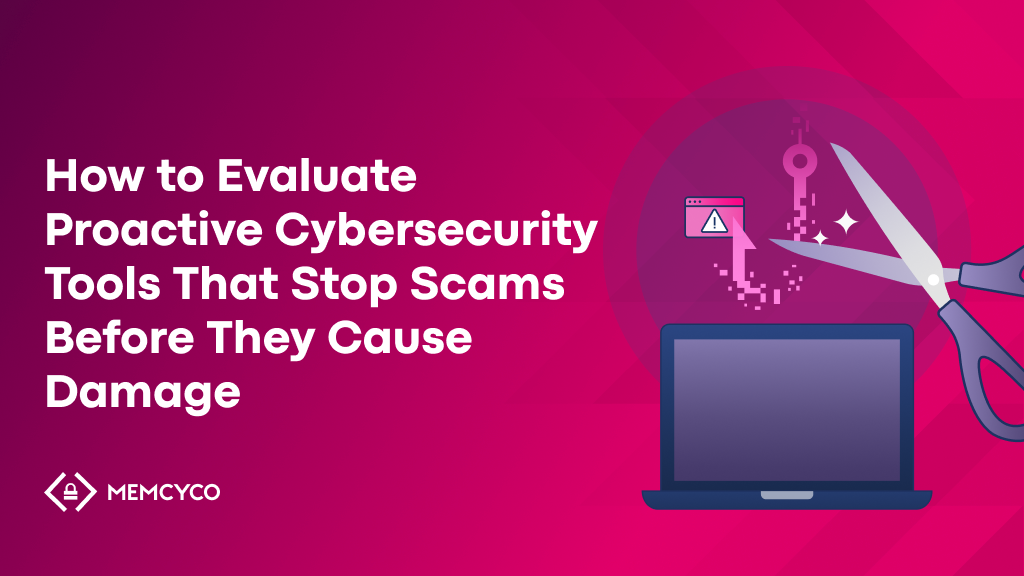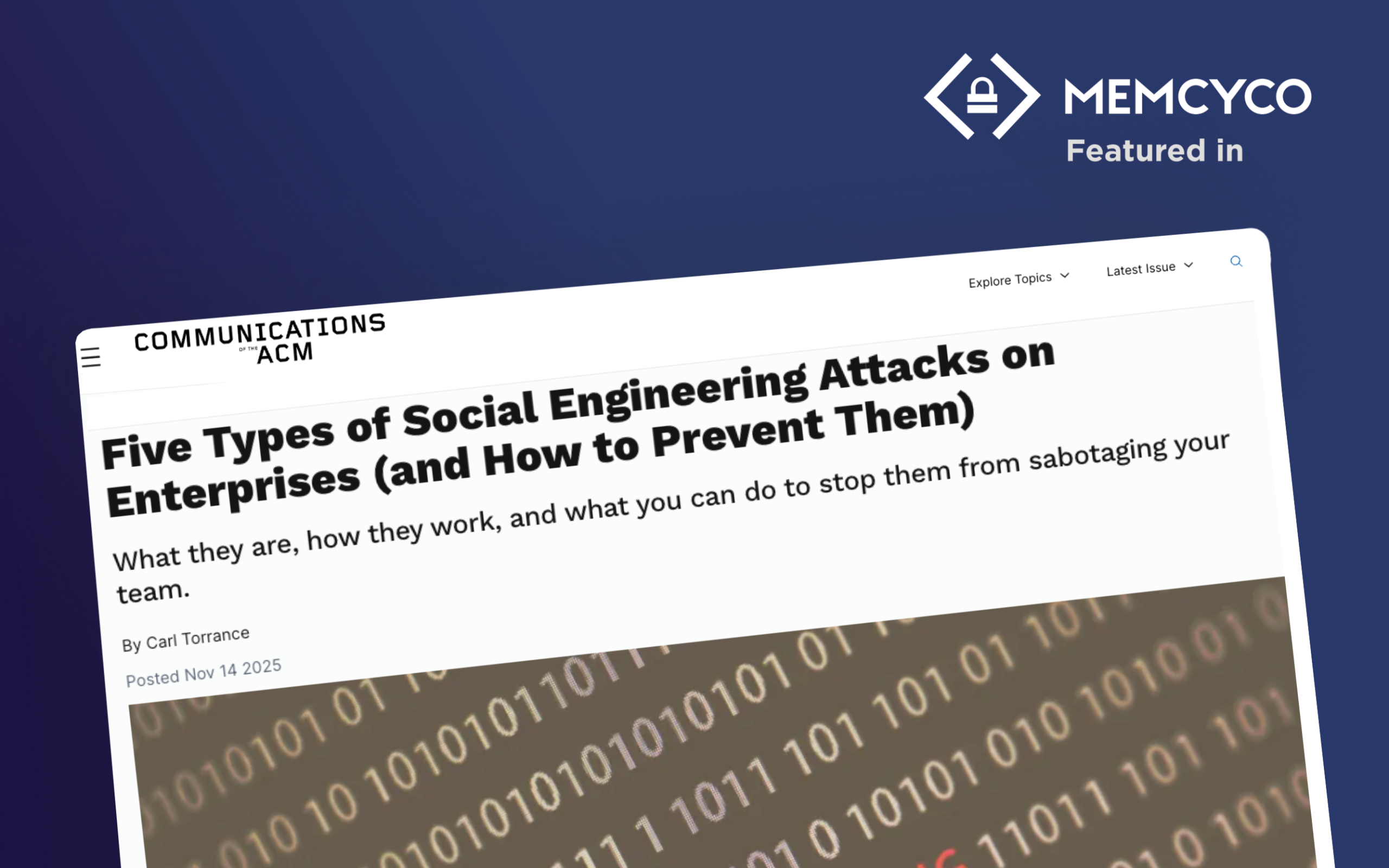Website cloning attacks are a form of digital impersonation where threat actors replicate a company’s legitimate website to deceive users, harvest credentials, or redirect payments, often before enterprises even realize a clone exists. These attacks exploit brand trust at scale, turning familiarity into a weapon against customers.
The Attacker’s Playbook: A Low-Cost, High-Yield Operation
Understanding why these attacks are so pervasive requires looking at their execution. Cloning a website is no longer a manual, time-consuming process; it’s a streamlined, automated operation.
Attackers leverage a simple, repeatable playbook:
- Automated Replication: Using widely available scraping tools (like HTTrack) or specialized phishing kits purchased on the dark web, an attacker can copy a a website’s entire front end (HTML, CSS, JavaScript, and images) in minutes. The Anti-Phishing Working Group (APWG) reported observing nearly five million total phishing attacks in 2023 – the worst year on record. This unprecedented volume underscores the effectiveness and widespread adoption of automated digital impersonation methods, which enable attackers to launch credential theft campaigns at massive scale.Related reading: The Rise of Perfect Clones: Darcula Phishkit & How to Stop It
- Rapid Infrastructure Deployment: The clone is hosted on lookalike infrastructure through typo-squatting (e.g., your-bank.co instead of your-bank.com) or combo-squatting (e.g., yourbank-support.com). Attackers use automated services to register these domains and even provision free, valid SSL/TLS certificates, making the fake site appear secure.
- Targeted Traffic Luring: The cloned site is useless without victims. Attackers drive traffic using phishing emails, SMS messages (smishing), malicious QR codes (quishing), or by injecting their fake site into search results through SEO poisoning and malvertising.Related reading: QRishing: How to Protect Customer Data From Offline Phishing
- Hit and Run: The entire operation is ephemeral. Attackers expect discovery and shutdown, aiming to harvest as many credentials or payments as possible before brand protection teams can file a takedown. Once blocked, they redeploy the same clone on a new lookalike domain.
- Adversary-in-the-Middle (AiTM) Techniques: Advanced phishing kits and reverse-proxy services can operate as AiTM proxies, presenting multi-factor authentication (MFA) prompts or one-time passcode (OTP) requests to victims while relaying and capturing their responses in real time. This enables attackers to bypass both single-factor and many multi-factor authentication controls.
Related reading: Why MFA Isn’t Enough to Fight ATO and How Memcyco Helps
Why Traditional Digital Brand Protection Fails to Catch Website Cloning Attacks
Traditional digital brand protection tools focus on discovering and removing impersonation assets, such as fake domains, ads, or cloned pages, after they appear online. While they help maintain brand reputation and reduce exposure over time, they lack the real-time visibility needed to detect active impersonation and protect users before damage occurs.
Why They Fall Short
- Reactive by design. Most tools rely on web crawlers, threat feeds, or user reports. By the time a cloned site is indexed or flagged, it may already have deceived users or captured sensitive data. This reactive posture is critically slow: According to a 2025 analysis of phishing website lifecycles, the median lifespan of a phishing site is only 5.46 hours. In stark contrast, traditional blocklists (like Google Safe Browsing) took an average of 4.5 days to detect them, by which point over 83% of the malicious sites were already offline.
- No visibility into victims or interactions. These tools can identify a fake domain’s existence but provide no insight into who visited it, how users arrived there, or whether login attempts occurred, leaving security teams blind to actual exposure.
- Limited threat prioritization. Because alerts are based on static similarities such as logos or domain patterns, legacy systems can’t distinguish between inactive parked domains and live, weaponized clones. Teams waste time triaging noise instead of focusing on active threats.
- Slow response cycles. Formal takedown processes often take several days, while attackers can deploy and discard new domains within hours. By the time removal completes, the impersonation campaign has already evolved or shifted infrastructure.
- Disconnected from enterprise security telemetry. Digital brand protection data typically sits outside SOC and fraud workflows. Without in-session context or API-level integration, teams can’t connect impersonation alerts to real-world attack activity or take immediate defensive action.
The Business Impact: Beyond Reputation Loss
The business impact of website cloning is rarely visible until it hits customer confidence. Each live impersonation drives uncertainty, escalates workloads across fraud and SOC teams, and dilutes the credibility that digital channels depend on.
The result is not downtime; it is hesitation. Customers pause, transactions stall, and trust erodes quietly. But the costs escalate quickly:
- Direct Financial Losses: Enterprises may reimburse customers for fraudulent transactions, cover chargeback fees from diverted payments, or lose funds directly through replicated payment portals.
- Crushing Operational Strain: Support teams are flooded with calls from confused customers (“Is this email from you?” “Did my payment go through?”). SOC and fraud teams are forced into manual, reactive response, verifying alerts and handling takedowns.
- Wasted Marketing & Acquisition Spend: Attackers hijack brand equity, using malicious ads or SEO poisoning to intercept high-intent traffic. Brands then compete against their own clones, inflating Customer Acquisition Costs (CAC) while losing conversions.
- Compliance and Legal Penalties: When cloned sites harvest Personally Identifiable Information (PII), it can trigger data breach obligations under GDPR, CCPA, or PCI-DSS, leading to fines, legal costs, and reputational fallout.
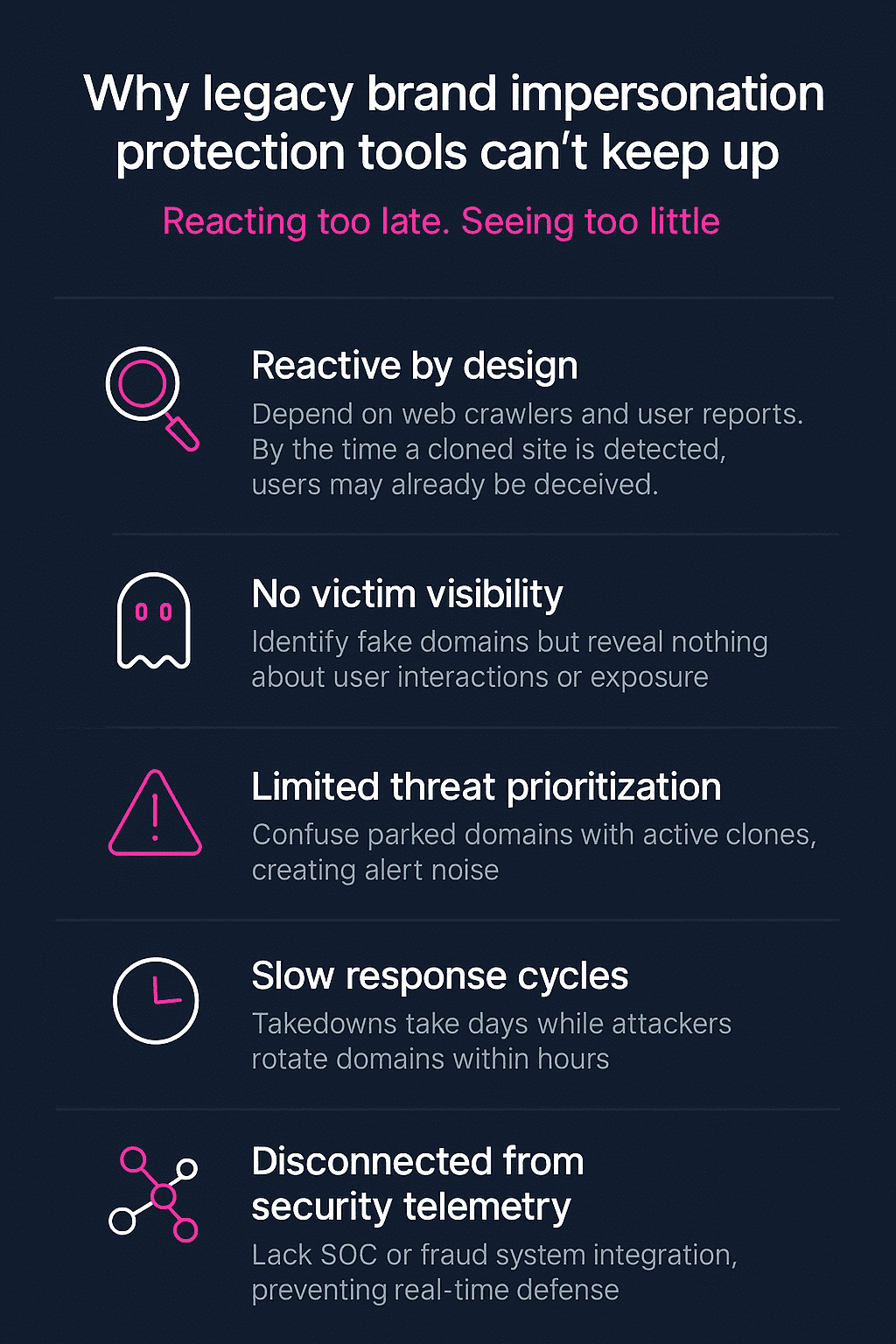
Legacy brand protection tools react too late and see too little. This infographic breaks down the five key reasons traditional solutions miss active website cloning attacks, and why enterprises need real-time visibility to defend users before damage occurs.
Sector Spotlight: Where Cloning Attacks Hit Hardest
While all digital brands are targets, the impact of website cloning is especially severe in high-trust, high-transaction industries:
- Banking & Finance: Attackers replicate login portals to harvest credentials for account takeover, wire fraud, or fraudulent applications. Even one successful incident can erode a reputation built over decades.
- E-commerce & Retail: Attackers clone product pages or checkout funnels to capture credit card details or divert payments. Brands are left managing angry customers and lost sales.
- Healthcare: Impersonating patient portals or insurance providers enables theft of Protected Health Information (PHI), fueling identity theft, insurance fraud, and extortion.
- Airlines & Travel Rewards: Attackers clone airline websites or loyalty portals to steal frequent flyer credentials, enabling reward point theft, fraudulent bookings, or unauthorized ticket redemptions. Victims often face difficulties reclaiming lost miles or travel funds while brands suffer trust and revenue damage.
How to Detect and Stop Website Cloning in Real Time
To stay ahead, enterprises must move from post-incident cleanup to real-time impersonation detection. This requires a layered defensive strategy that delivers visibility at every stage, from when bad actors are using dev tools to perform reconnaissance on the legitimate website, to the moment a user interacts with a cloned site.
Key Capabilities for modern defense against website impersonation
- Developer Tools Reconnaissance Detection: The “left-of-boom” signal. Before cloning, attackers often inspect code. Advanced solutions detect the signatures of scraping tools and excessive DevTools usage, flagging reconnaissance before a clone exists.
- Lookalike Domain Monitoring: Proactively identifies suspicious hostnames and certificate patterns, monitoring Certificate Transparency logs for domains containing your brand name before traffic builds.
- Website Cloning Detection: Instantly detects when a cloned version of your site becomes active by monitoring unauthorized use of code, assets, and API calls on lookalike domains.
- Preemptive Protection Posture: Unifies early reconnaissance detection, domain monitoring, and live impersonation alerts into a single, continuous defense cycle. This ensures threats are identified and contained before users or brand assets are ever exposed.
- SEO Poisoning Defense: Combats copycat sites that leverage organic search engine optimization to outrank the legitimate sites their impersonating, stealing traffic, scamming customers and impacting digital trust.
Together, these capabilities give enterprises a proactive, real-time advantage – seeing impersonation as it unfolds, identifying victims, and preventing data theft before it becomes fraud.
Memcyco’s preemptive cybersecurity solution extends brand protection with real-time visibility into impersonation activity across web and mobile channels. Memcyco’s platform detects active clone sites, identifies affected users, and issues Red Alerts to prevent data theft. Combined with SEO poisoning defense and decoy credential use, it bridges detection and response, safeguarding both customer trust and brand integrity.
Discover Your Memcyco Advantage Against Website Cloning Attacks
Memcyco’s preemptive cybersecurity solution extends brand protection with real-time visibility into impersonation activity across web and mobile channels. Memcyco detects active clone sites, identifies affected users, and issues Red Alerts to prevent data theft. Combined with SEO poisoning defense and decoy credential use, it bridges detection and response, safeguarding both customer trust and brand integrity.
Related Reading
- Top 10 Domain Takedown Services
- How to Run a Domain Spoofing Check & Stop Fake Sites
- What Domain Takedown Services Miss & How to Close Gaps
FAQs About Website Cloning Attacks
How do website cloning attacks work?
Attackers use automated scraping tools or phishing kits to replicate a website’s front end, host it on a lookalike domain, and lure users through phishing, SEO poisoning, or malicious ads.
Why do website cloning attacks evade traditional brand protection?
Legacy brand protection platforms depend on crawlers and manual takedowns that act long after damage begins. Without real-time, browser-level visibility, they miss active impersonation campaigns and offer no insight into who was targeted or deceived.
How can enterprises detect website cloning in real time?
Effective detection hinges on telemetry from user browsers and genuine site sessions. By analyzing referral paths, domain mismatches, and behavioral signals, advanced solutions identify unauthorized clones the moment they go live, allowing instant awareness of scope and victims.
What industries are most at risk from website cloning attacks?
Sectors built on customer trust (banking, e-commerce, and healthcare) are top targets. Attackers exploit brand familiarity and transactional urgency to harvest credentials, payments, and sensitive data at scale.
How do Adversary-in-the-Middle (AiTM) phishing kits change the threat?
AiTM kits extend cloning attacks by relaying MFA prompts and one-time passcodes between the victim and the legitimate site. This enables attackers to intercept session tokens and bypass traditional multi-factor defenses in real time.




